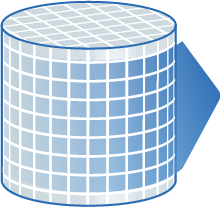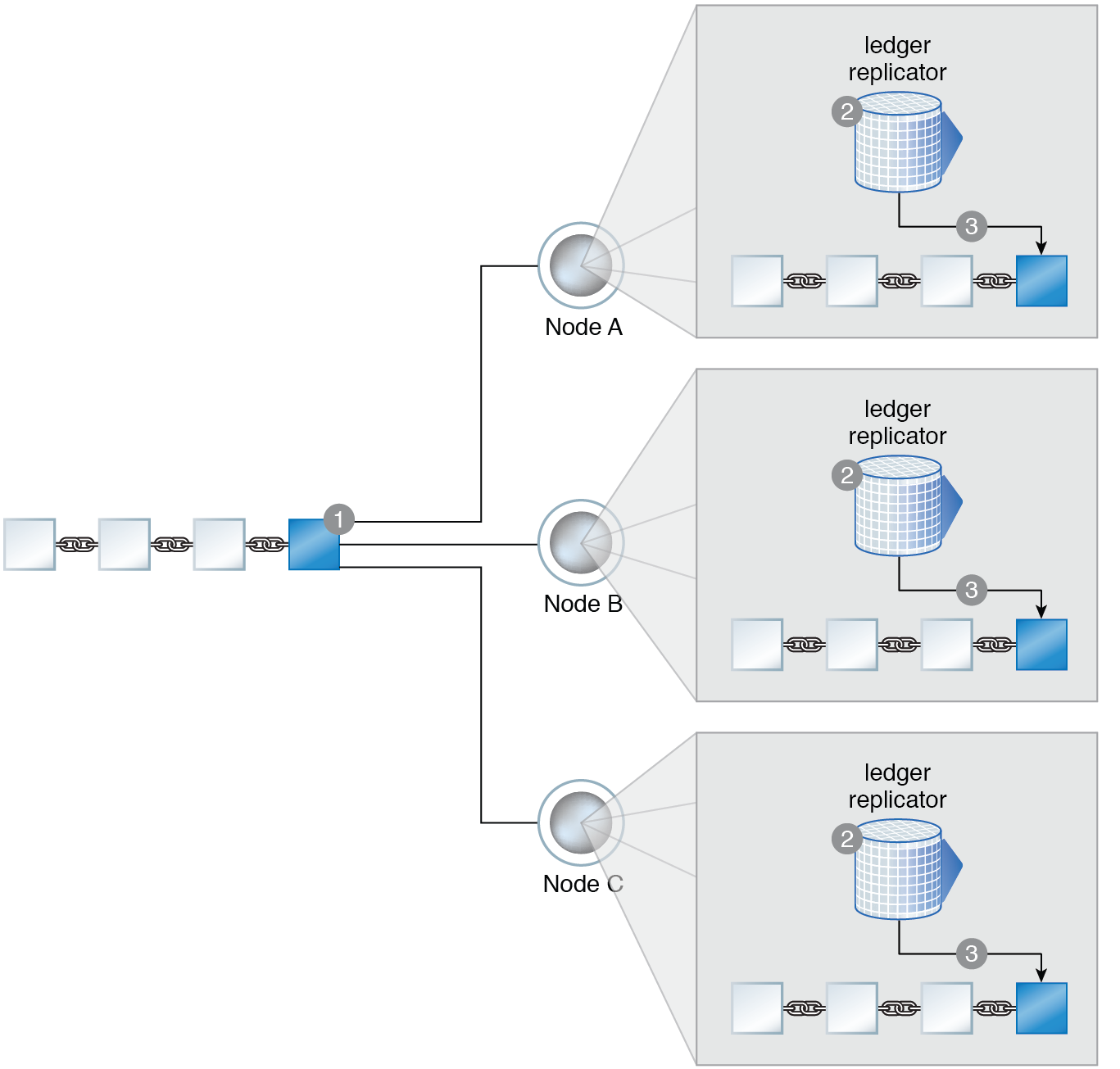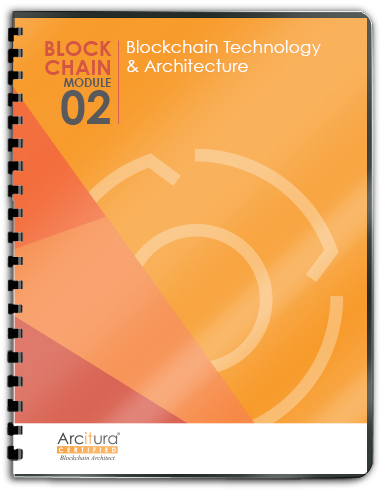Blockchain Patterns, Mechanisms, Models, Metrics > Mechanisms > Ledger Replicator
 Ledger Replicator
Ledger Replicator
When a new block is generated, the ledger replicator mechanism replicates the updated distributed ledger across each node on a blockchain network. The ledger replicator receives notifications when new blocks are generated and updates the ledgers accordingly. Based on how the blockchain application is configured, a broadcast to all affected nodes is sent to inform them of the update.
The hashing engine mechanism receives plain input data and uses mathematical hashing functions to convert this data into a hashed value called a digest.

Each node connected to the blockchain network has a ledger replicator installed. A new block is generated (1). As a result of the communication between nodes, the ledger replicator is made aware that the new block is created (2). The ledger replicator on each node adds the new block to the existing ledger to ensure that the node has the current version of the ledger (3).
This pattern is covered in Blockchain Module 2: Blockchain Technology & Architecture.
For more information regarding the Blockchain Architect curriculum, visit www.arcitura.com/blockchain.
